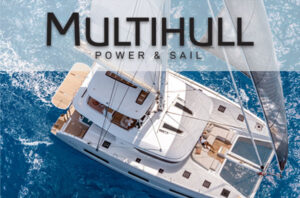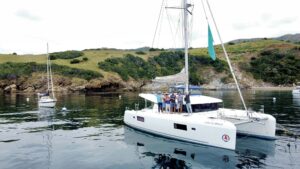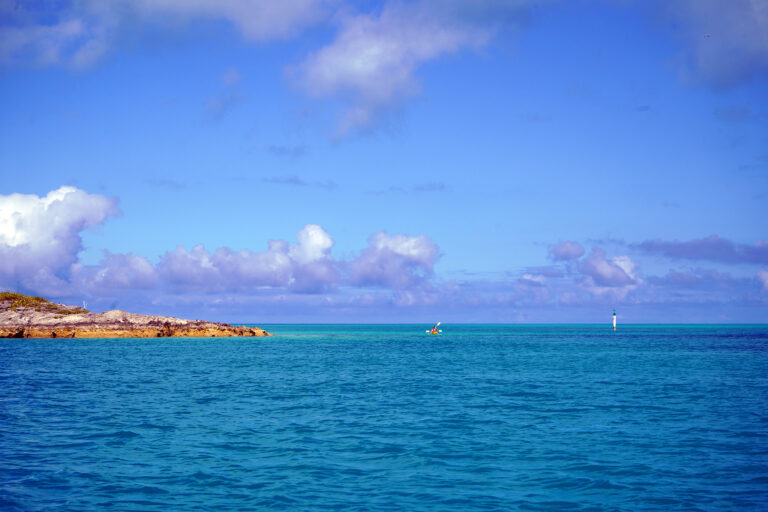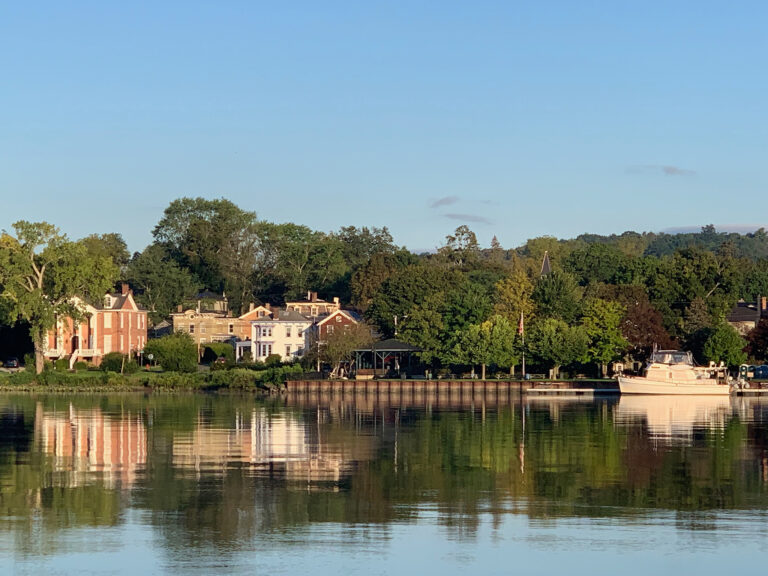With cool new boats joining established favorites, the beach boat scene is stronger than ever
Althoughmultihulls have been around for thousands of years, the beach cat is a relatively new invention—the brainchild of a generation of sailors, surfers and Navy vets all taking advantage of the new boatbuilding materials that became widely available in the wake of World War II.
In the late ‘60s, surfboard builder Hobie Alter, inspired by the Art Jarves-designed 12-foot Aqua Cat and the 19-foot Pacific Cat—the only two beach cats then in production—set out to build a fiberglass catamaran that was fast and easy to launch into the surf. Basing his lightweight design on the big 30-plus-foot catamarans used to take tourists daysailing off the beaches of Hawaii, he developed the singlehanded Hobie 14. His next design, the Hobie 16, which is still in production today, was an even bigger hit, sparking a whole new beach-sailing culture that remains evident in the many fleets of Hobies dotting shorelines worldwide today. The Hobie 16 charms novice and experienced sailors alike. With its simple rig and lack of daggerboards, it is the perfect daysailer for families and sailors looking to have some onshore fun.
Since the advent of these early designs, beach cats have continued to develop along two tracks: a competitive one, in which cutting-edge naval architects have continued to push the performance envelope, creating ever-faster designs (see Cat Attack!, p. 70) and a more family-friendly one, with an emphasis on durability and fun.
For example, while Hobie Cat remains a major player in the red-hot F18-class world—its race-oriented Hobie Wild Cat has wave-piercing bows, sleek hulls, high-aspect daggerboards and a spinnaker—it has remained true to its roots. Lately, the company created an extensive line of rotomolded polyethylene family fun boats, including the Wave, Bravo and Getaway.
Of course, while Hobie is a well-known player in the industry, it is not the only one. There are a number of smart, creative individuals and companies out there that have made this one of the more interesting areas of boat design around.
Smartkat’s inflatable cat, for instance, can be tucked away into two 45-pound duffel bags. Fully rigged, it weighs only 90 pounds. “It’s sporty and hip,” says Patrick Oltmanns of
Smartkat. “You can fly the hulls easily, even in light winds. You can store it anywhere, even in your camping tent, and then carry it from the camping grounds to the shore.”
Meanwhile, the Weta has also emerged from the beach scene. The 14-foot long trimaran, originally designed in New Zealand as a stable learning boat for kids, is now a hit among adults too, especially for those getting back into sailing. “With no vang, no outhaul, and minimum sailing lines, sailors can focus on honing their sailing skills,” says David Berntsen of Weta. “It’s fast, but it’s also a safe performance dinghy.” The boat is easily trailered and rigged, meaning Weta sailors are racing all over the U.S. In fact, the one-class design held its first national championship last spring in Fort Myers, Florida. But for many, it’s the thrill of the ride, the low skill-level requirement and the price that really makes Weta—and beach multihulls in general—attractive and fun to sail.
The long-established WindRider company has a popular line of rotomolded trimarans, all with foot-pedal steering and easily managed rigs. Its smallest is the 11-foot one-person Tango, while its WindRider 17 can carry several people and has a motor-mount option.
Rotomolded boats are cheap, virtually maintenance-free and extremely durable, but nearly impossible to repair. They are created with plastic resin granules that are poured into an aluminum mold and heated at 300°F for 30 minutes. “The plastic melts, and the mold spins as it cools so the plastic coats the molding evenly. Once it’s cooled and opened, the hull is popped out and cleaned up,” says Robert Sanberg of WindRider. Sailors can add their own ideas to these boats, too. “Sailors make modifications to the WindRider that fit their needs and personalities. People drill holes into their boats to add parts, they put outboards on them, and they make the boat their own. That’s the fun of it,” Sanberg says.
The Topaz 14CX is another sturdy rotomolded beach cat that has recently arrived on the market. Built in the UK, it is ideal for adults sailing singlehanded or youngsters sailing doublehanded. In its standard form it’s a family-friendly little cat, but it can be rigged with a trapeze and spinnaker if you want an adrenaline-boosting ride. “It’s such a diverse boat,” says Topaz importer Peter Cook. “Anyone can sail it, because it caters to a wide range of abilities.” In fact, the boat’s simple rig is what attracts beach cat sailors. “You don’t need to tinker or tweak stuff on your boat. Sailing a cat is about spending time with others. You take your friends out sailing so they can experience the sport as a whole. Beach cat sailing is about a bond,” says Cook.
The evolution of the beach cat—and beach tri—continues. The latest trend is to make boats multifunctional. For instance Hobie offers a hybrid Mirage series, which combines kayaking, paddleboating and sailing into one trimaran. The two-person Mirage Tandem Island converts from sailboat to kayak. The boat has carbon-fiber rigging, a roller-furling and battened mainsail, and cockpits with steering and sail-handling controls. And though this boat isn’t ideal for long cruises, it has plenty of hatches and on-deck storage which, according to the folks at Hobie, allows for multi-day voyages.
While the Hobie brand has come to define beach cat culture, and the niche has been broadened by other builders offering innovative and exciting craft, it’s also refreshing to know that American Sail is still building the Aqua Cat 12.5, the original mass-production sail-off-the-beach cat that made its debut half a century ago. Its family-friendly A-frame rig can be set up in minutes and the boat can be car-topped and trailered. What was true in 1961 is just as true today: it’s the thrill of the ride, ease of use and the price that make beach multihulls in general a blast to own and sail.
OFF THE BEACH
In keeping with its roots, competitive beach cat sailing doesn’t just take place around the buoys. It is also done both on and off the beach. Organizations such as the New England Nacra Sailing Association promote beach cat racing by hosting F18 catamaran regattas. Many beach cat regattas start on the shore, with boats launching “Le Mans” style directly from the beach. Among these regattas is the Great Texas 300, a race from South Padre Island to Galveston, Texas. The Tybee 500, a six-day regatta held along the east coast of Florida, was also popular but has not been held since 2011.
Lauren Saalamuller is SAIL’s Assistant Editor.
She lives and sails in New England, but soaks up
the sun while sailing beach dinghies near Fire Island








